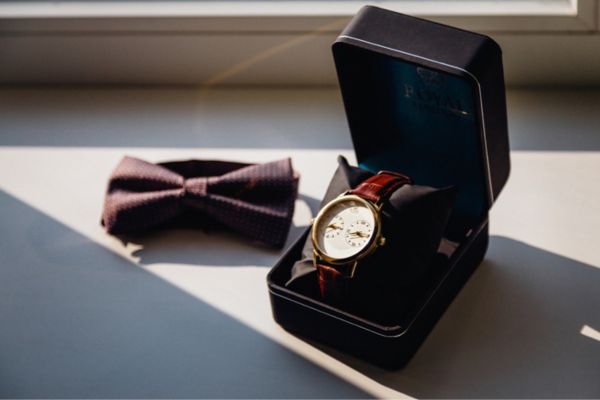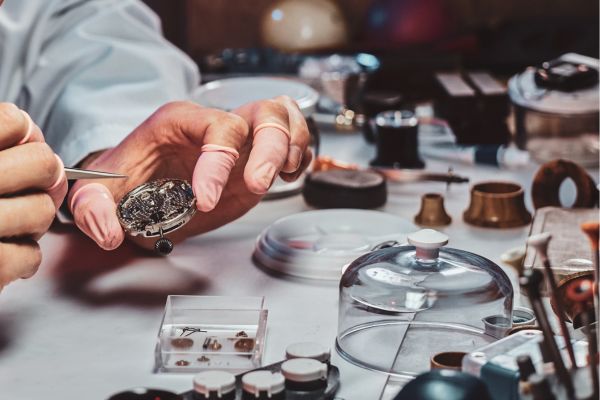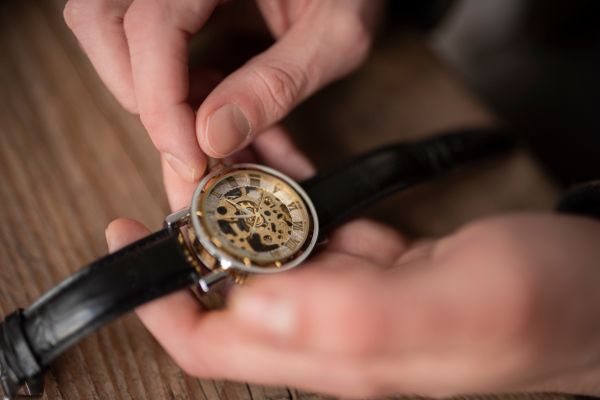Summary
- Understanding the Importance of Maintaining an Automatic Watch
- Best practices for maintaining an automatic watch
- Periodic checks at a watchmaker to maintain your watch
- Common mistakes to avoid
- The impact of environmental conditions
Automatic watches are more than just instruments for measuring time; they are a reflection of craftsmanship and precision engineering. Owning such a watch is a privilege, but it also comes with a responsibility: the responsibility of maintaining it properly. But how do you maintain an automatic watch so that it retains all its splendor and precision over the years?
Understanding the Importance of Maintaining an Automatic Watch
Automatic watches are made up of hundreds of small mechanical parts that work in harmony. Without proper maintenance, these components can wear out prematurely, affecting not only the accuracy of the watch, but also its longevity.
Best practices for maintaining an automatic watch
Keeping your watch in perfect condition requires special attention and appropriate actions. Here's how to maintain an automatic watch on a daily basis to preserve its beauty and functioning.
Regular cleaning of the watch
Cleaning is a fundamental step in maintaining an automatic watch. Dust, sweat and residue can accumulate on the case and strap, altering the aesthetics of the watch and even affecting its mechanism. It is recommended to clean your watch with a soft, dry cloth after each use. This simple gesture helps preserve the shine of the materials and prevent corrosion.
Avoid magnetic fields
Magnetic fields are one of the invisible enemies of automatic watches. They can disrupt the internal movement and affect the accuracy of the watch. To maintain an automatic watch effectively, avoid placing it near electronic devices such as smartphones, speakers, or strong magnets.
Proper storage

Where you store your watch plays an important role in its care. A dry environment, away from direct sunlight and temperature fluctuations, is ideal. Using a watch case or box protects your timepiece from dust and accidental impacts.
Protection against water and humidity
Even if your watch is water-resistant, it is advisable to protect it from salt or chlorinated water, which can damage the seals and materials. After exposure to water, be sure to dry your watch thoroughly to prevent internal corrosion.
Periodic checks at a watchmaker to maintain your watch

Beyond daily maintenance, automatic watches require regular servicing by professionals. Understanding when and why these servicing are necessary is essential for optimal maintenance.
Frequency of revisions
It is generally recommended to have your watch serviced every 3 to 5 years . This frequency may vary depending on how you use it and the manufacturer's recommendations. Regular servicing ensures that all components are working properly and that the lubricating oils have not dried out.
What a complete watch overhaul includes
During an overhaul, the watchmaker completely disassembles the movement to clean each part individually . Worn components are replaced, the parts are lubricated, and the mechanism is precisely reassembled. This meticulous process allows an automatic watch to be maintained and ensures its longevity.
Common mistakes to avoid
Certain practices can, without you knowing it, harm your watch. Identifying and avoiding these mistakes is an integral part of maintaining an automatic watch.
Attempts at personal repair
Even if you are a handyman, opening an automatic watch without expertise can cause irreversible damage. Mechanical movements are delicate and require specific know-how. In the event of a problem with your Mod Nautilus for example, it is always best to consult a professional watchmaker like Luxury Mods.
Ignoring signs of wear
If you notice that your watch is slow , fast or you hear unusual noises , these are signs that a service is necessary. Ignoring these signals can lead to more serious damage and high repair costs.
The impact of environmental conditions
Automatic watches are sensitive to their environment. Understanding how external conditions affect your watch will help you better maintain it.
Extreme temperatures
Temperature fluctuations can affect the materials and oils inside the watch. Avoid exposing your watch to intense heat or extreme cold to preserve its mechanism.
Shocks and vibrations
Sports activities or manual work can expose your watch to significant shocks. To maintain an automatic watch, it is advisable to remove it during such activities to avoid damaging the internal components.
Taking care of your watch is a gesture that combines passion and respect for watchmaking. By following these tips on how to maintain an automatic watch, you not only ensure the proper functioning of your timepiece, but you also extend its history and value.


The automatic watch with complication: what is it?
How to wind an automatic watch?